Notable people
| Lists of Americans |
|---|
| By US state |
| By ethnicity |
| Total population | |
|---|---|
| Less than 300 [1] | |
| Regions with significant populations | |
| Midwest | |
| Languages | |
| American English, Kashubian, Polish | |
| Religion | |
| Christianity | |
| Related ethnic groups | |
| Other Kashubians • Polish Americans • Texan Silesians • Czech Americans • Slovak Americans • Sorbian Americans |
Kashubian Americans are Americans of Kashubian descent. [2] [3]
The two earliest Kashubian American settlements in the United States were centered around Winona, Minnesota, and Portage County, Wisconsin. The Winona settlement included the Minnesota town of Pine Creek and the Wisconsin towns of Dodge, Fountain City, and Trempealeau. The Portage County settlement included the Wisconsin towns of Hull, Polonia, and Sharon. [4] The Winona settlement is traditionally dated to 1855, but actually began in 1859. [5] The Portage County settlement can be definitively traced back to 1858. Winona is dubbed the "Kashubian Capital of America" because of the large population of Kashubians there. [2] [6]
After the American Civil War and the German Kulturkampf from 1848 to 1884, Kashubians emigrated to the United States in three waves through the Kashubian region. While some headed for the Winona area and for Portage County, many Kashubians wound up living in major urban centers such as Buffalo, Detroit, Chicago, and Milwaukee. A smaller number of Kashubians settled in small farming communities scattered throughout Minnesota, North Dakota, and Montana. [7] By the turn of the century, Kashubian Americans tended to identify themselves completely as Polish Americans, although in Winona at least the Kashubian language would survive for another generation or two. [8]
| Lists of Americans |
|---|
| By US state |
| By ethnicity |
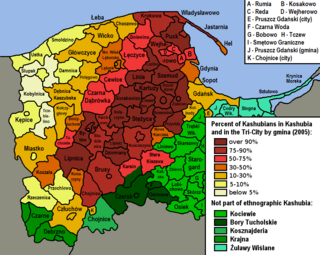
The Kashubians, also known as Cassubians or Kashubs, are a Lechitic ethnic group native to the historical region of Pomerania, including its eastern part called Pomerelia, in north-central Poland. Their settlement area is referred to as Kashubia. They speak the Kashubian language, which is classified as a separate language closely related to Polish.

Winona is a city in and the county seat of Winona County, Minnesota, United States. Located in bluff country on the Mississippi River, its most noticeable physical landmark is Sugar Loaf. The population was 25,948 at the 2020 census.

Kościerzyna is a town in Kashubia in Gdańsk Pomerania region, northern Poland, with 23,327 inhabitants as of June 2023. It has been the capital of Kościerzyna County in Pomeranian Voivodeship since 1999; previously it was in Gdańsk Voivodeship from 1975 to 1998.

Bytów is a town in the Gdańsk Pomerania region of northern Poland with 16,730 inhabitants as of December 2021. It is the capital of Bytów County in the Pomeranian Voivodeship.

Polish Americans are Americans who either have total or partial Polish ancestry, or are citizens of the Republic of Poland. There are an estimated 8.81 million self-identified Polish Americans, representing about 2.67% of the U.S. population, according to the 2021 American Community Survey conducted by the U.S. Census Bureau.

Brusy is a town in northern Poland, located in the Pomeranian Voivodeship. As of June 2023, the town has a population of 5,103.

Leśno is a village in the administrative district of Gmina Brusy, within Chojnice County, Pomeranian Voivodeship, in northern Poland. It lies approximately 8 kilometres (5 mi) north of Brusy, 30 km (19 mi) north of Chojnice, and 77 km (48 mi) south-west of the regional capital Gdańsk. The village is situated on the shores of Leśno Górne and Lesno Dolne lakes.
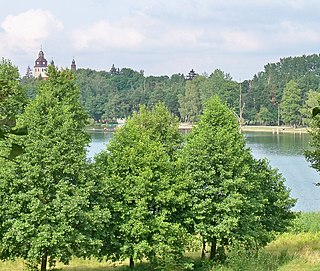
Wiele is a village in the administrative district of Gmina Karsin, within Kościerzyna County, Pomeranian Voivodeship, in northern Poland. It lies approximately 5 kilometres (3 mi) north-west of Karsin, 23 km (14 mi) south of Kościerzyna, and 71 km (44 mi) south-west of the regional capital Gdańsk. It is located in the Zabor Land, a southern part of the ethnocultural region of Kashubia in the historic region of Pomerania.

Pine Creek is an unincorporated community located in the town of Dodge, Trempealeau County, Wisconsin, United States. Pine Creek is located on Pine Creek and County Highway G 9.6 miles (15.4 km) west-northwest of Galesville.
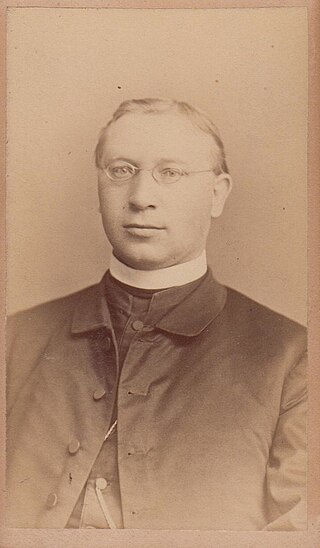
Jan Romuald Byzewski, better known in America as Father Romuald Byzewski, was born in the Kaszubian village of Karwia, in the Prussian jurisdiction of Danzig (Gdansk), on October 10, 1842.
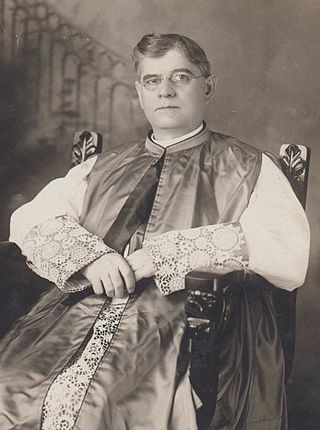
Jakub Wałenty Jan Pacholski, better known in America as Monsignor James W.J. Pacholski, was born on May 24, 1862, in the village of Pączewo, located in the Polish region of Kociewie.
Józef Franciszek Darzyn Ciemiński was a Polish-born Roman Catholic priest. He emigrated with his parents to the United States in 1881 and was ordained as a Priest in Saint Paul, Minnesota in 1895. He was involved with numerous Polish Catholic parishes during his lifetime including the now closed troubled Parish of Saints Peter and Paul in Duluth, Minnesota, and the parish of Holy Cross in Minneapolis.

The Kashubian Cultural Institute & Polish Museum is a cultural and historical museum, founded in 1979 to preserve the Polish and Kashubian heritage of Winona, Minnesota. Known locally as the Polish Museum, it is housed in a lumber yard office built by the Laird-Norton Lumber Company in 1890, located at 102 Liberty Street in Winona, Minnesota, United States. The museum was formerly known as the Polish Cultural Institute and Museum, but has since updated its name to expand upon the highlights of the Kashubian culture within Winona.
The Kashubian diaspora resulted from the emigration of Kashubians mainly in two waves occurring in the second half of the 19th century. The majority of Kashubian emigrants settled in the United States; others emigrated to Canada and Brazil. An online genealogical project, "The Great Kashubian Migration," is devoted to tracking their settlement patterns. Their reasons for emigration varied. Until the Franco-Prussian War, Kashubians emigrated primarily for economic reasons. After the Franco-Prussian War and especially due to the Kulturkampf, Kashubian emigration accelerated as socio-political factors came into play. In his 1899 book, Statystyka ludnosci kaszubskiej, the Kashubophile linguist and sociologist Stefan Ramult estimated that 130,700 Kashubians were living in the Americas.
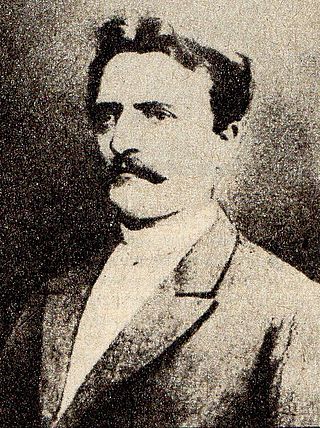
Hieronim Derdowski, Kashubian-Polish intellectual and activist, was born to Kashubian parents in the Pomeranian village of Wiele. By the time Derdowski emigrated to the United States in 1885, he had already studied for the Roman Catholic priesthood, been repeatedly incarcerated by the German authorities, and edited a newspaper in the city of Torun. At the time, however, Derdowski was better known as a poet. Within two years of reaching the United States he became editor of the Winona, Minnesota Polish-language newspaper Wiarus. In this role he gained a reputation as a strong voice for the Polish-American community, also known as Polonia.
Wiarus was the name of a Polish-language newspaper published in Winona, Minnesota from 1886 to 1893 and 1895 to 1919; in 1893 it was renamed Katolik, but reverted to its original name in 1895. Although Winona's Polish community was known at the time as the "Kashubian Capital of America," Wiarus was published in the "good" Polish spoken in Warsaw and Krakow. Wiarus also provided printing services for Winona's Kashubian Polish community. From 1886 to 1902, Wiarus was edited by the famed Kashubian-born poet and journalist Hieronim Derdowski. In its heyday, Wiarus was said to be the most widely circulated Polish-language newspaper in the United States.
Paul Joseph Breza, Roman Catholic priest and Kashubian American activist, was born in Winona, Minnesota on June 23, 1937, the son of Joseph Peter and Alice Seraphine (Pehler) Breza, both of whom were descendants of Kashubian immigrants from Bytów, Poland. He was educated at Saint Stanislaus Kostka School, Cotter High School and Saint Mary's University of Minnesota.

Antoni Klawiter, the Roman Catholic and, afterward, independent Polish Catholic priest, was born in Chojnice, in modern Poland, on November 12, 1836. The scholarly consensus is that he was the son of Polonized Germans; by virtue of his Kashubian birthplace and his later experience pastoring Kashubians in Winona, Minnesota, he will not have been unfamiliar with the Kashubian culture. In 1859, he was ordained a Roman Catholic priest in Włocławek, and became four years afterward one of many Polish priests who were involved with the Polish Insurrection of 1863. In late 1873 or early 1874, Father Klawiter emigrated to the United States.
The history of Winona, Minnesota as a settlement begins with the foundation in 1851 in what was then Minnesota Territory on the West side of the Mississippi River. The site was of the village of Keoxa of Dakota people. The name "Winona" (Wee-no-nah) was noted to be the name of a first-born daughter in the local Dakota language.

Stefan Ramułt was a Polish scholar who specialized in the language and culture of the Kashubians.